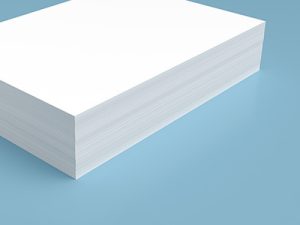
Calcium carbonate is an inorganic substance, the surface of the particles is polar, hydrophilic and oleophobic, and has agglomeration, poor compatibility with organic polymers, uneven dispersion in polymer base materials, low binding force, and easy to produce interfaces Defects lead to unstable product quality.
Calcium carbonate without surface modification as a paper-making filler has disadvantages such as poor compatibility and binding force with pulp fibers, low retention rate in paper, and reduced mechanical strength of paper. Therefore, calcium carbonate needs to be surface modified in order to be better used in the paper industry.
The surface modification process of calcium carbonate mainly includes dry modification process, wet modification process and in-situ modification process. Generally, heavy calcium carbonate prepared by dry grinding adopts dry modification process, and heavy calcium prepared by wet grinding adopts wet modification process. Light calcium carbonate is prepared by chemical method, generally using in-situ modification process. Commonly used modifiers for surface modification of calcium carbonate for papermaking mainly include coupling agents, polymers, and inorganic substances.
1. Coupling agent
The coupling agent is a substance with an amphoteric structure. The molecule has both hydrophilic polar groups and hydrophobic non-polar groups. It can combine inorganic particles and organic substrates through a firm interface layer.
Fully mix the cationic aluminum-zirconium organometallic complex coupling agent with light calcium carbonate at a ratio of 0.3:100, react at about 110°C for 15-30 minutes, and use the surface-modified light calcium carbonate for Making paper. It can improve the physical performance indicators such as bursting strength, tearing strength and tensile strength of paper, and improve the physical strength of paper; at the same time, it can also improve the retention rate of PCC.
2. Polymer
The polymer can be directional adsorbed on the surface of calcium carbonate particles to form a physical or chemical adsorption layer, thereby improving the stability of calcium carbonate in the organic or inorganic phase (system).
Using cationic starch to modify PCC filler alone and cationic starch and sodium stearate to modify PCC filler, the results show that the whiteness is slightly reduced, but the difference is small, and the tensile index, tear index, and drainage performance of the paper And filler retention rate has been greatly improved, and the latter is better than the former. Modified PCC fillers can be better bonded to fibers, thus improving the strength properties of filled paper and the retention performance of papermaking wet end.
A ternary polymer system is used to modify heavy calcium carbonate. First, anionic polyacrylamide (APAM), cationic starch (CSt) and cationic polyacrylamide (CPAM) form a polyelectrolyte complex, and then deposit and coat it. On the surface of heavy calcium carbonate for papermaking, it causes pre-flocculation of fillers. Compared with the unmodified heavy calcium carbonate, the modified heavy calcium carbonate was used as a paper-making filler, and the average size of the filler was found to be 9 times that of the unmodified filler; the ash content of the paper was increased by 2.2 times. (ash content 16.32%). Since heavy calcium carbonate is used for paper filling after modification, filler flocs (about 50-100 μm in size) are formed, which are mainly distributed in the voids formed by interweaving fibers or covering the surface of the fiber network. There is less hydrogen bonding between them, so the paper can maintain good tensile strength.
3. Inorganic substances
The surface pH of calcium carbonate is high, and it is easy to decompose when encountering acid, so its application is limited. Acid-resistant inorganic substances such as condensed phosphoric acid, sodium silicate, alum, sodium aluminate, silicon dioxide, and titanium dioxide are often used to modify calcium carbonate particles to reduce the pH value, improve acid resistance, and expand its scope of application.
By means of a sol-gel method, the surface of the light calcium carbonate filler is coated with silicon dioxide to complete the surface modification of the light calcium carbonate. The results showed that better paper strength properties could be obtained without compromising the paper’s structural properties and brightness compared to handsheets using unmodified light calcium carbonate as a papermaking filler.
In summary, surface modification of calcium carbonate can endow calcium carbonate with excellent physical and chemical properties, such as reducing agglomeration, increasing lipophilicity, and improving the binding force with polymer base materials. Calcium carbonate modified and used in the papermaking process can obviously increase the retention rate of calcium carbonate in paper without reducing the strength of paper.
